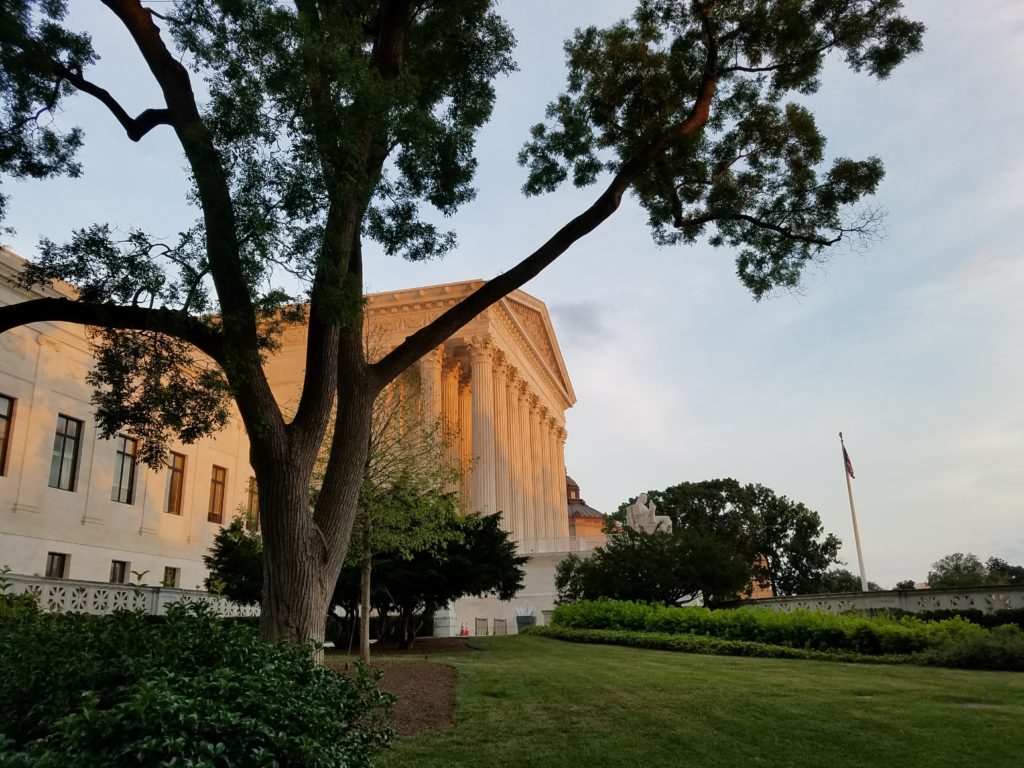
One year ago this coming Thursday, June 27, the Supreme Court of the United States decided the case of Mark Janus v. the American Federation of State, County, and Municipal Employees (AFSCME). This landmark U.S. labor law case overturned precedent and continues to impact government workers across the country. But one year after the 2018 decision, there is still much confusion regarding the case itself and its implications. Here are some answers to frequently asked questions.
What led to Janus v. AFSCME?
In 1977, long before Janus v. AFSCME, the Supreme Court decided on Abood v. Detroit Board of Education. Teachers in Detroit challenged the assessment of “agency shop fees” on non-union members. The Court sided with unions, stating that these fees cover costs of collective bargaining, contract administration, and grievance adjustment, from which nonmembers benefit.
In 2016, the Supreme Court heard a challenge to Abood in Friedrichs v. California Teachers Association. Rebecca Friedrichs, an elementary school teacher, claimed that the so-called “agency shop arrangement” was invalidated by the First Amendment rights of freedom of speech and freedom of association. Because of the death of Justice Antonin Scalia, the Court’s decision was split evenly, ultimately upholding Abood, but maintaining the opportunity for another similar case to reach the Supreme Court.
Who is Mark Janus, and what is AFSCME?
Mark Janus worked as a child support specialist for the state of Illinois. The American Federation of State, County, and Municipal Employees (AFSCME) is the largest public services employees union in the United States. In Illinois, AFSCME negotiated a deal with the state government to exclusively represent over 90 percent of the state’s employees. This meant that before Janus even saw his paycheck, AFSCME had already deducted union fees without his permission, even though he was not a union member. These fees are meant to pay for collective bargaining and representation even for non-union employees, but like many unions, AFSCME uses revenue to support political candidates as well. Because paying union fees was a condition of his employment with the state, Janus felt his First Amendment rights of freedom of speech and freedom of association were violated.
What is the Janus decision?
The case made it all the way to the Supreme Court, where a 5-4 decision was made in favor of Janus. Justice Samuel A. Alito Jr. wrote the majority opinion, stating, “this arrangement violates the free speech rights of nonmembers by compelling them to subsidize private speech on matters of substantial public concern.” This means that all government employees are no longer required to pay union dues as a condition of employment.
What are the effects of Janus, and why is it important?
Prior to the Janus decision, over five million government employees in 22 states were forced to pay union fees as a condition of employment. Mark Janus paid about $45 per month in union fees, amounting to over $500 per year, and many thousands throughout his career. Thanks to Janus, government employees are no longer required to pay union dues as a condition of their employment and have regained power over their financial security. The decision on Janus has returned to public sector workers their constitutional rights of free speech and freedom of association and has set a precedent that will protect those rights for years to come.
For additional answers to frequently asked questions on Janus, visit StandWithWorkers.org. Stay tuned for more Janus information as we celebrate this landmark decision throughout the week!